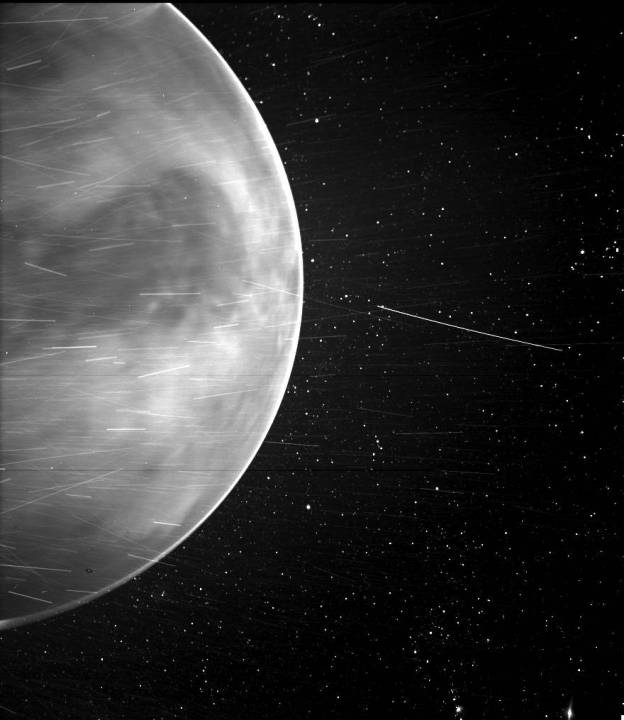
A NASA spacecraft intended to study the sun has been doing some bonus science, revealing new information about Venus as it passes by the planet. It’s been a long time since a spacecraft has taken a direct measurement of the Venusian atmosphere — according to NASA the last time was almost 30 years ago when the Pioneer Venus Orbiter peered into the atmosphere in 1992 — and the study has revealed some fascinating facts about our planetary neighbor.
The big finding is a naturally occurring low-frequency radio signal which is emanating from the planet’s atmosphere. It was detected using the Parker Solar Probe’s FIELDS instrument, which is designed to measure electronic and magnetic fields around the sun. But it could also be used to detect the radio signal from Venus — a small disturbance with a familiar shape and strength.
Lead scientist Glyn Collinson recognized the disturbance as similar to a finding made when the Galileo spacecraft swung past Jupiter’s moons. That occurred when the spacecraft passed through a moon’s ionosphere or the ionized part of the atmosphere. By comparing the results from Galileo to those from Parker, Collinson and his colleagues were able to extrapolate information about the ionosphere of Venus as well, as its relationship to the phases of the sun.
The sun goes through phases of more or less activity, called the solar maximum and solar minimum, and researchers think that these phases are related to how thick Venus’s atmosphere is. The atmosphere may be lost into space over time, and the pace of this loss could be related to solar activity.
All of this science data comes as a bonus to the Parker mission, which primarily aims to study the sun. The probe is on a trajectory that will bring it increasingly close to the sun so it can study solar phenomena in more detail. To help get the spacecraft closer, its orbit periodically swings around Venus and it has previously captured a gorgeous image of the planet.
“The goal of flying by Venus is to slow down the spacecraft so that Parker Solar Probe can dive closer to the Sun,” said Nour E. Raouafi, Parker Solar Probe project scientist at the Applied Physics Laboratory, in a statement. “But we would not miss the opportunity to gather science data and provide unique insights into a mysterious planet such as Venus.”



